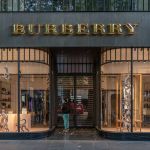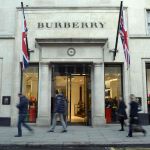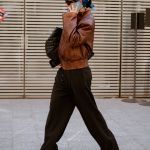
To what extent is the pandemic costing Burberry?
The British brand looks at China as the strategic asset for its restart
May 25th, 2020
Since the first estimates on the economic impact of the COVID-19 pandemic on the fashion industry, it was clear that Burberry would have been one of the most affected brands.
According to the latest numbers released by the British luxury giant, sales decreased by 3%, to a value of £ 2.6 billion pounds, causing the operating profit to drop by 57% to £189 million for the year ended on March 28th, cancelling moreover its dividend.
The stores closed almost all over the world, with slow reopenings only on Chinese territory, are only the tip of the iceberg of a production and retail system paralyzed by the pandemic, that starts from the production and supply chain and arrives at the warehouses and distribution centres, closed as well right now. One of the biggest issues Burberry has not to face is that of inventory and its costs. The impossibility to move goods and products is costing Burberry £68 million. Instead of being sold at full price, the inventory will be destined for outlets or sold during employee sales. To curb costs, Burberry redirected the inventory to those regions where shopping is slowly recovering, such as China and South Korea, sending the goods directly from the distribution centre in Hong Kong. In addition, the brand has announced that the Spring/Summer collection will remain longer in stores, in a broader attempt to redefine the seasons of fashion.
There are no more doubts about the importance of the Chinese market for Burberry - just think that 44% of the brand's sales happen thanks to citizens of Chinese nationality - especially after the end of the pandemic. Marco Gobbetti, CEO of the brand, confirms how the Chinese territory will be strategic for the future growth of the industry, confirming the prediction that the luxury market will depend more and more on China. Burberry is working on a plan dedicated to the region, that includes the launch of exclusive products, social initiatives on platforms such as Xiaohongshu and tailor-made campaigns. Despite a delay due to the spread of the virus, the project carried out together with the tech giant Tencent, which had as its objective the creation of a social retail store, which would break down the barriers between physical and virtual shopping, was not cancelled, but only postponed.
Burberry had to deal with the pandemic at a crucial moment in its repositioning plan in the luxury sector. Not only do the products designed by creative director Riccardo Tisci represent 85% of the brand's offer, but more generally the brand has increasingly focused on its luxury boutiques, gradually abandoning department stores, especially in the United States. After two years of structural changes, this was to be the year designated for the acceleration phase, a phase which is however destined to wait. Given the current market conditions, the acceleration phase as such will only be possible in China, while for Europe and the United States the restart plan may take longer.
























































